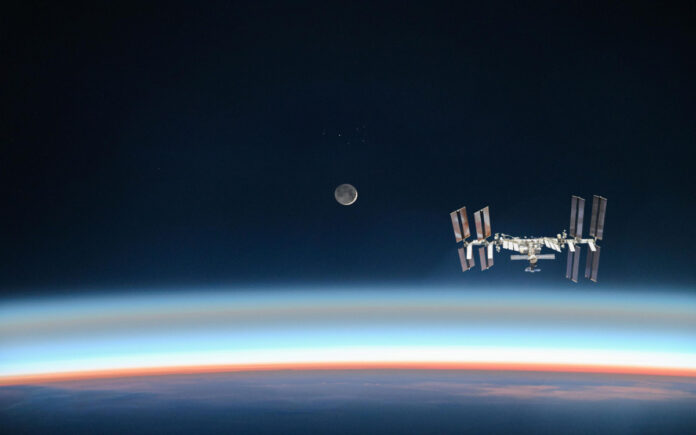Milan: The world’s space agencies convene in Milan this week as geopolitical rivalry fuels a new global race in Earth’s orbit and on the moon, with significant involvement from the private sector striving to keep pace with Elon Musk’s dominant SpaceX. The International Astronautical Congress (IAC), held since 1950, serves as a platform for scientists, engineers, companies, and political leaders from spacefaring nations to discuss cooperation, even amid heightened tensions among global powers.
This year’s conference will bring together the space minds of two top rivals—the U.S. and China. However, Russia’s space agency, Roscosmos, a storied power now isolated from the West following Moscow’s 2022 invasion of Ukraine, will have no official presence, highlighting the latest fault lines in space cooperation. Despite this, nearly all of the 77 member countries of the International Astronautical Federation (IAF), which organizes the IAC, are participating in discussions expected to focus heavily on lunar exploration, NASA’s growing coalition of countries under its Artemis moon program, and Europe’s urgent need for more sovereign access to space.
IAF President Clay Mowry noted a record 7,197 technical abstracts submitted for this congress, with 37% of the papers being presented by students and young professionals. “This is the most exciting time in space since the Apollo era in the 1960s,” he told Reuters.
NASA Administrator Bill Nelson is anticipated to rally support at the IAC for the agency’s strategy to engage private companies in replacing the aging International Space Station (ISS) after its planned retirement in 2030. The ISS, which has operated for over two decades, has served as a symbol of space diplomacy led primarily by the U.S. and Russia, despite conflicts on Earth.
NASA, investing billions in its flagship Artemis moon program, aims to maintain a presence in low-Earth orbit to compete with China’s Tiangong space station, which has continuously housed Chinese astronauts for three years. Both the U.S. and China are racing to return humans to the moon for the first time since the last Apollo mission in 1972, aggressively courting partner countries and leaning heavily on private companies to support their moon programs, thereby influencing the objectives of smaller space agencies.
Shifting Priorities for Europe in the Space Landscape
The IAC coincides with Italy’s parliament beginning the approval process for the country’s first legislative framework for the space industry, which establishes rules and responsibilities for private investments in the sector. “These rules give the national ecosystem guidance on how to reach our objectives and grant the use of space in a sustainable and useful way,” Italy’s Industry Minister Adolfo Urso stated on Sunday.
Italy, a leading contributor to the European Space Agency, recently pledged 7.3 billion euros ($7.98 billion) through 2026 for both national and European projects. The rise of disruptive space technologies, private competition driven largely by SpaceX, and geopolitical tensions have compelled Europe to reassess its priorities regarding launchers and satellites.
Musk’s SpaceX and its workhorse Falcon 9 are relied upon by much of the Western world for accessing space, prompting countries—including the U.S.—to encourage new space upstarts that can offer more affordable rockets. Furthermore, SpaceX’s expanding Starlink internet network has positioned the company as the world’s largest satellite operator.
Also Read | India’s Space Game Plan: Data-Driven Solutions and Affordable Launches
After a year-long hiatus, Europe regained uncrewed access to orbit with the test flight of its Ariane 6 launcher in July. However, capacity remains constrained due to severed ties with Russia, whose Soyuz rockets played a crucial role for Europe before the Ukraine war. Europe’s satellite manufacturing industry is also facing increasing pressures, as the once-thriving market for large, bespoke geostationary satellites is now heavily challenged by constellations in low Earth orbit, such as SpaceX’s Starlink.
Italy’s Leonardo (LDOF.MI), one of the hosts of this week-long event, has called for a new strategy for the space sector that embraces its French joint venture partner Thales (TCFP.PA) and their primary rival in satellite manufacturing, Airbus (AIR.PA). Industry sources indicate that the three companies are engaged in preliminary discussions about combining their satellite activities; however, much will depend on the stance of a new European Commission, which previously blocked attempts to form a single entity.
Also Read | Pakistan in Lockdown Mode: Schools and Colleges Shut Down, Marriages Banned Due to Security Concerns
European strategists argue that space is a global market, and forcing European companies to preserve choices within the same region overlooks the larger picture of international competition. NASA’s initiative to foster privately built replacements for the ISS is fostering transatlantic collaborations, such as the joint venture formed this year between Airbus and U.S. space operations firm Voyager, aimed at capturing European demand for low-Earth orbit research and operations.



